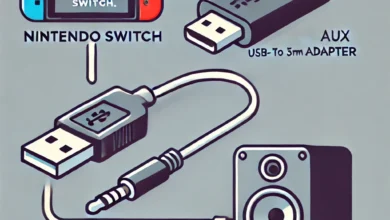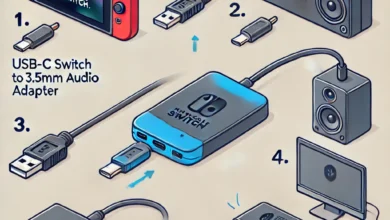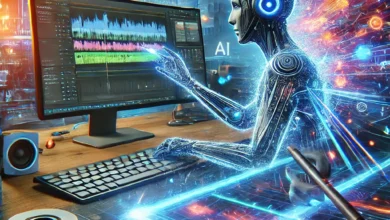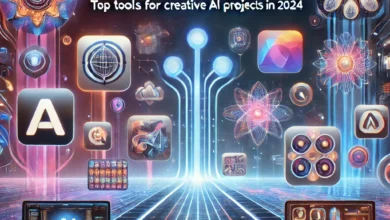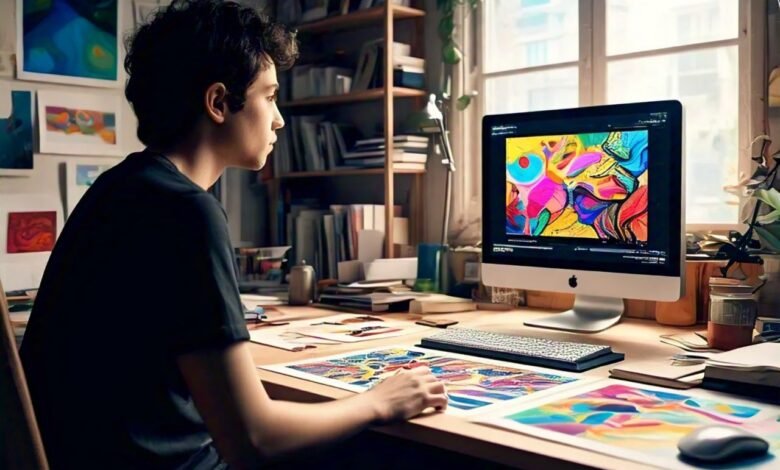
Artificial intelligence (AI) is reshaping various industries, and the world of art is no exception. Artists, designers, and creators are now leveraging AI tools to unlock new dimensions of creativity and innovation. One such powerful tool that has garnered significant attention is RunwayML. This platform has made AI accessible to individuals across different disciplines, empowering them to create stunning artwork and animations. In this blog post, we’ll dive deep into how AI art with RunwayML is transforming the creative landscape and how you can use this tool to create your own AI-driven masterpieces.
What is RunwayML?
RunwayML is a cutting-edge platform that brings machine learning (ML) and artificial intelligence to creatives. Initially designed for video editing, RunwayML has expanded its capabilities to cater to artists, designers, filmmakers, and developers. It provides an intuitive, user-friendly interface that enables non-technical users to experiment with AI models, without the need for coding knowledge.
At its core, RunwayML allows users to integrate machine learning models into creative projects, making it easier for individuals to generate, manipulate, and enhance images, videos, and other media types using AI.
How Does AI Art Work on RunwayML?
AI-generated art typically relies on machine learning models, which are trained on vast datasets to learn patterns, structures, and styles. RunwayML offers a variety of pre-trained models that can be applied to creative projects, including models for generating realistic images, enhancing photos, transforming photos into artistic styles, and even generating original artworks from scratch.
Here are a few ways AI art is created using RunwayML:
- Image Generation (Text-to-Image): RunwayML enables users to create images based on textual prompts. By feeding the system a description, such as “a futuristic city skyline,” the AI can generate an image that reflects the prompt. The platform often uses popular models like Stable Diffusion, DALL·E, and BigGAN to produce high-quality images from simple text inputs.
- Style Transfer: Style transfer is one of the most popular applications of AI in art. It involves taking an existing image and altering its visual style to match that of another image, typically a famous artwork. For example, you can upload a photo of a landscape and apply the artistic style of Vincent van Gogh or Pablo Picasso. RunwayML’s powerful tools allow for the smooth application of these stylistic changes with minimal effort.
- Image Editing and Enhancement: RunwayML also includes AI models that can automatically enhance and edit images, correcting colors, sharpness, and even removing backgrounds. Users can interactively adjust the final result by tweaking sliders or giving specific instructions for changes, making it ideal for both novice users and professional artists.
- Animation and Video Generation: While image generation is often the primary focus, RunwayML’s capabilities extend into video as well. Users can create AI-generated animations or even manipulate video content by applying various models to generate new visuals, enhance footage, or alter its style. Video creators can speed up editing processes using RunwayML’s automated features.
- Text-to-Speech and Voice Synthesis: Beyond visual arts, RunwayML also offers text-to-speech and voice synthesis capabilities, which can be used in conjunction with AI-generated imagery or animations. Artists can generate voiceovers or create characters with distinct voices, enhancing their multimedia projects.
Why RunwayML is Popular Among Artists
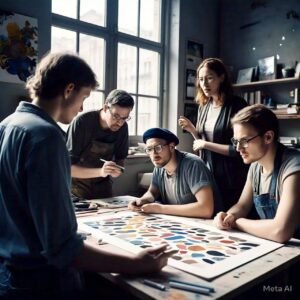
RunwayML stands out as a versatile AI art tool for several reasons:
- Ease of Use: The platform is designed to be user-friendly, offering a no-code interface that allows anyone, regardless of technical skill, to harness the power of AI. This democratization of AI tools means more people can participate in the creation of AI-powered art.
- Real-time Collaboration: One of RunwayML’s features is its real-time collaboration capabilities, allowing multiple users to work on the same project. This is particularly beneficial for teams of artists, designers, and creatives who need to exchange ideas and feedback rapidly.
- Access to a Range of Pre-Trained Models: RunwayML provides access to a diverse selection of pre-trained models, covering everything from image generation to video manipulation and sound synthesis. Users can experiment with these models and combine them in unique ways to create original art.
- Cloud-Based Platform: As a cloud-based tool, RunwayML provides scalability and access to powerful GPU hardware, which is crucial for processing large datasets and running complex machine learning models. This makes it easier to create high-quality art without investing in expensive hardware.
- Flexibility in Integration: RunwayML can be integrated with other creative software tools, including Adobe Photoshop, Premiere Pro, and Unity. This ensures that artists can maintain their workflows and easily incorporate AI-generated content into their existing projects.
Practical Uses of AI Art with RunwayML
- Graphic Design and Branding: Designers can use RunwayML to generate unique logos, typography, and graphics for branding purposes. The platform’s AI tools enable the rapid exploration of different styles and variations, speeding up the design process and expanding creative possibilities.
- Music and Album Artwork: Musicians and album designers can use AI-generated visuals for album covers, promotional materials, or music videos. RunwayML’s text-to-image models can produce surreal or stylized visuals that complement the tone of the music.
- Fashion and Textile Design: AI-generated fashion designs are becoming more prominent in the industry, and RunwayML allows designers to experiment with new patterns, colors, and textures. AI can also be used to explore innovative fashion concepts or assist in designing textiles.
- Film and Animation: Independent filmmakers and animators can incorporate AI-generated visuals, special effects, and background art into their productions, saving time and resources in post-production. AI also allows for faster iteration and the ability to generate complex scenes without traditional manual labor.
- Social Media Content: With the growing demand for engaging content on social platforms, RunwayML offers an easy way to create eye-catching visuals and animations for social media posts, advertisements, and influencer collaborations.
The Future of AI Art with RunwayML
The future of AI art is incredibly promising, with continuous advancements in machine learning and computational power. As AI models become more sophisticated, platforms like RunwayML will only improve, offering even more creative possibilities. Artists will likely be able to use AI to co-create, pushing the boundaries of traditional art forms and exploring new ways of engaging with their audiences.
In the coming years, we can expect AI-generated art to become more integrated into various fields, from entertainment and advertising to design and education. RunwayML will continue to be a key player in making these technologies more accessible, helping to shape the future of creative expression.
Conclusion
AI art with RunwayML is a game-changer for creators, offering endless possibilities for those looking to experiment with technology-driven art. The platform’s easy-to-use interface, powerful machine learning models, and cloud-based capabilities make it an essential tool for modern artists. Whether you’re a digital artist, designer, filmmaker, or simply a curious enthusiast, RunwayML empowers you to create beautiful, innovative art using AI. The world of art and design is being redefined, and RunwayML is at the forefront of this exciting new frontier.
